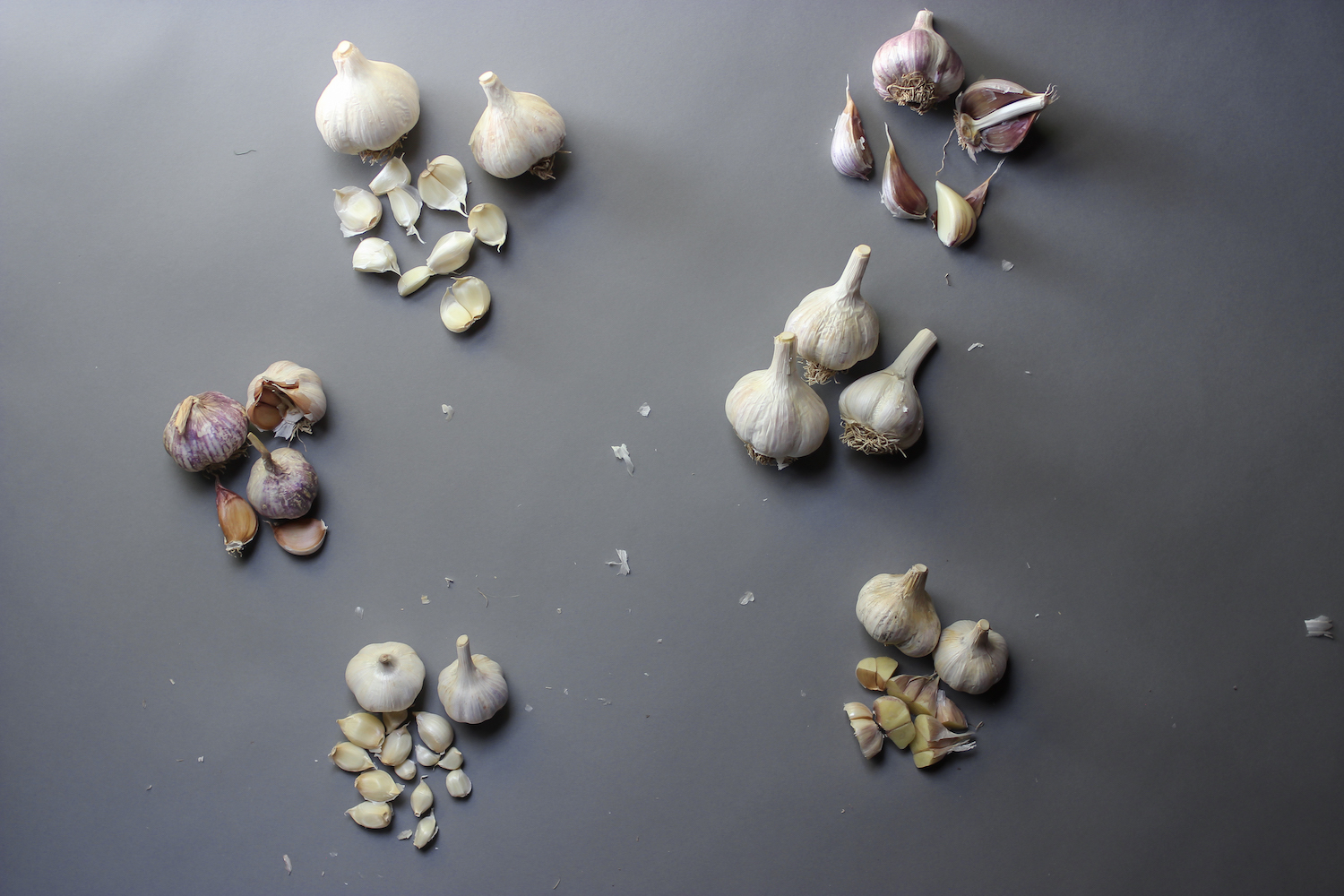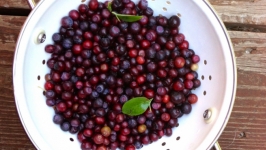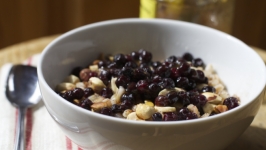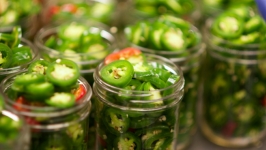The Moscow Food Co-op's Garlic Guide & Mushroom Manual
Use these handy catalogs to help you make the right decision when picking a new garlic variety or exploring unfamiliar mushrooms at the Moscow Food Co-op.
GARLIC
Music
One of the most popular hardneck varieties, Music garlic is believed to have been brought to North America from Italy. This variety provides a truly gourmet garlic flavor when cooked, and is often a staple in the kitchens of casual garlic lovers and professional chefs alike. Music garlic produces scapes in the spring and has an exceptional shelf-life: up to nine months. It is great all around, often roasted whole or eaten in soups, sauces, and dips with its easy-to-peel cloves and mild to medium-hot flavor.
Tzan
This hardneck garlic originated in the Shandong Province in China, but is sometimes sold as “Mexican Red” when grown in Mexico and brought to the United States. One of the earliest garlics to harvest, this variety is complex and savory, with a rich flavor that is one of its most shining features — alongside the gorgeous purple skins, of course. Eat this one fried with a little butter, or alongside ginger in stir fry. When eaten raw, it’s pungently hot, so it makes a great addition to marinades, barbecue sauces, and Bloody Mary pickle mixes.
Inchelium Red
This softneck artichoke variety was discovered on the Colville Indian Reservation in northern Washington! Artichoke strains are generally the easiest to grow of all garlic varieties. Large and robust, it stores well and is relatively resistant to most diseases. It has a mild and buttery flavor that is often used as a “true medium” when it comes to pungency, heat, and garlickiness. It’s great cut in half and roasted, then blended with mashed potatoes. Inchelium Red has even been called one of the best American heirloom red garlic varieties.
Korean Mountain
A weakly bolting hardneck, the Korean Mountain is an Asiatic variety with 8-12 fat cloves. The flavor of the garlic is straightforward and fresh, with a slightly grassy notes and wasabi-like warmth. Keep your eyes open for these: Asiatic garlic like this may be difficult to find due to its short shelf life and early sprouting. Korean Mountain garlic is great in kimchi and will exude an even more robust flavor if cooked.
Metechi
Some of the most beautiful and largest of our local garlic, the Metechi variety is praised for its monstrous cloves that leave a pleasant, lingering aftertaste when eaten raw. Warm and rich in flavor, without the sharp acidity that sometimes comes from smaller garlic bulbs, Metechi garlic is a favorite in many kitchens due to their large bulbs that are covered in thick, easy to peel paper-like skin. This garlic variety is huge in size, and boasts an even bigger flavor. They are harvested in mid summer, but store all the way through winter.
Ajo Rojo
A Creole hardneck variety, Ajo Rojo is as hot and strong as it looks. Great for beginners interested in growing their own garlic, Ajo Rojo is resilient and low-maintenance. Its silky, reddish cloves are easy to store long-term, and carry an incredibly rich flavor that is creamy when cooked, but builds to become quite intense when eaten raw. Slice it and eat it raw atop pizza and pasta, or add it to soup for a dynamic and warm finish.
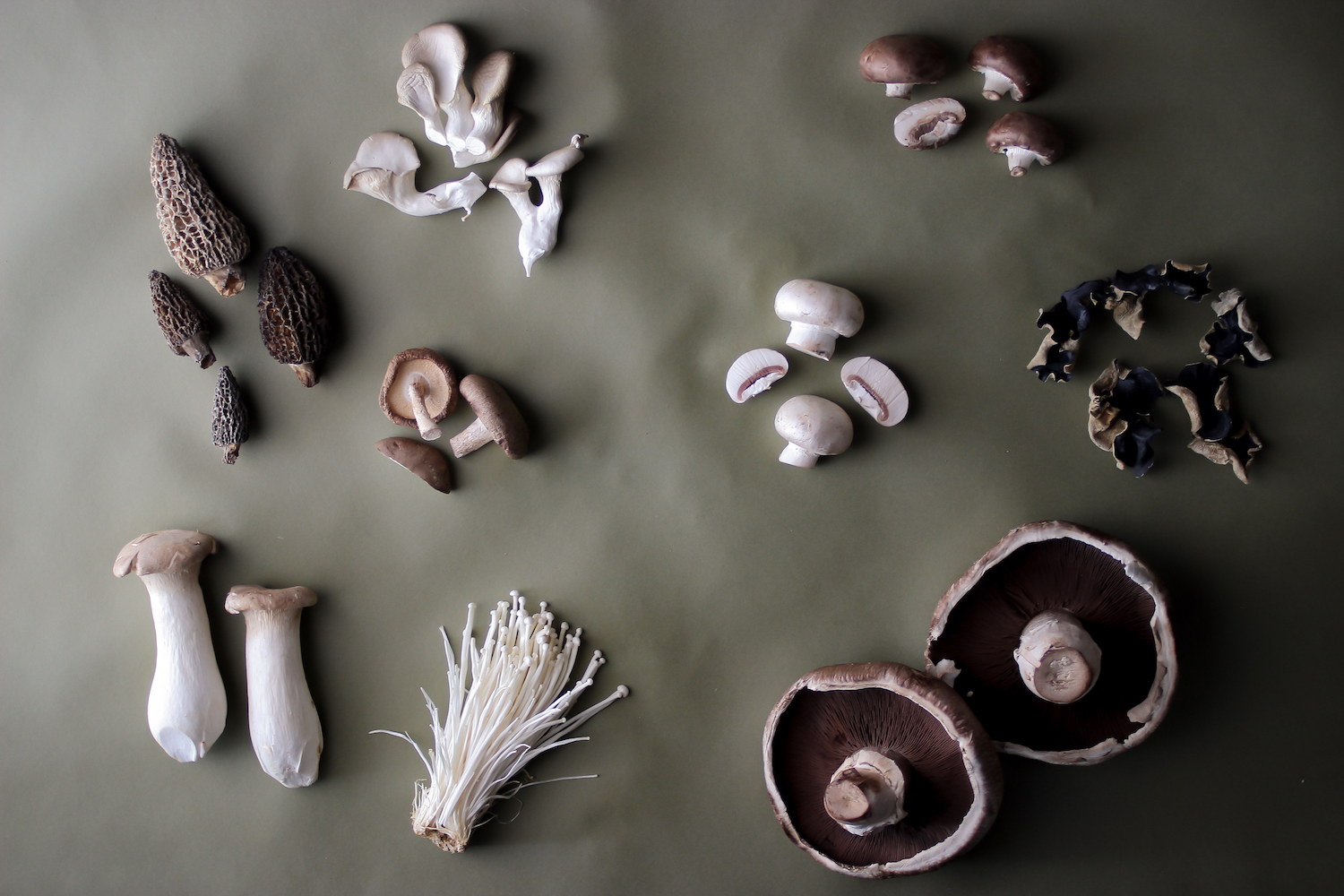
MUSHROOMS
Morels
One of the most sought-after wild mushrooms growing in our region, morels are in season on the Palouse after the last of the snow melts in late spring: usually late March to early May. Everyone has their own morel hunting secrets, so take an expert with you if you plan to forage for them on your own! They can be hard to spot, but here’s the thing: morels are delicious. Woody, nutty, slightly toasty tasting, and completely un-slimy, every bite with a morel is the best bite. Eat them prepared minimally, like cooked with butter and a tiny bit of salt, or atop a soft French omelet.
Oyster
Oyster mushrooms are much more subtle and nutty than their name would suggest. Good for soups, stews, and sauces, oyster mushrooms are delicate and soft. They cook very quickly and can get squishy, so be aware! In general, the lighter the oyster mushroom, the more subtle the flavor.
King Oyster
Resilient and meaty, king oyster mushrooms have a long shelf life and can last in the refrigerator for more than a week. The stems are sometimes likened to squid or tubby scallops in texture: in fact, some vegan eaters swear by replacing scallops with the stems of king oyster mushrooms. They are savory but less earthy than the average mushroom. We recommend them sautéed in butter until golden brown, or cooked in slices on the barbecue.
Shiitake
We firmly believe shiitake mushrooms should be a staple in everyone's kitchen. A little smoky, a little buttery, and very satisfying, shiitake mushrooms are rich and delicious. Versatile, firm, chewy, and strongly flavored, shiitake mushrooms truly have it all. We know their stems may seem too woody to eat, but don't throw them away! Save them in the freezer; they’re a key aspect of making an incredible, umami-packed veggie stock. Find these dried in the Moscow Food Co-op's Grocery department: aisle two!
Enoki
The flavor of this delicate mushroom is even more unique than its outward appearance. Mild but slightly crunchy when raw, they are similar to toothy al dente noodles when cooked. They have a sweet, clean flavor and have been a longstanding staple in East Asian cuisine. Enoki mushrooms are enjoying an invigorated popularity in the American fine dining food scene too, showing up on menus from Oriole in Chicago to Contra in New York City. Avoid exposing them to water - they can get slimy. They do best when kept in a paper bag in the fridge for only a few days.
Crimini
Another of this page's agaricus bisporus species, criminis are earthy, small, and brown. Crimini mushrooms are just as common and can be used just as widely as their white button relatives. In fact, the difference in color on the cap between white and crimini comes down to the specific strain of agaricus bisporus they're cultivated from. The crimini's under-cap gills are covered, unlike the mature version, portobellos. Their stems are completely edible, and the mushroom itself will last up to a week in the fridge.
White
White button mushrooms are just one version of the "common table mushrooms" on this page - all from the agaricus bisporus species, which includes portobello, cremini, and white button mushrooms at different stages of development. They are easily accessible due to being fairly inexpensive, and have a great flavor profile that stays strong regardless of how they're cooked. Use these anywhere a recipe calls for mushrooms: sautéed in stir fry, as a pizza topping, or skewered on a kebab.
Dried Wood Ear
These beautiful crinkles will add a unique element to each soup you make this season. If you look closely, you can see their lack of stems and caps, so they don't have a spongy texture and don't absorb a lot of water. Oddly enough, their velvety color and dark interior exist in contrast to their fresh flavor. They're often sold dried as pictured here. Wood ear mushrooms are crunchy in texture, high in iron, and rich in dietary fiber.
Portobello
A vegetarian's delight due to their meaty texture and rich flavor, portobellos are the most mature of the agaricus bisporus on this page. They're plucked and allowed to ripen to full maturity, so their gills are exposed. However, J. Kenji Lopez-Alt, author of the James Beard Award-nominated column "The Food Lab," recommends prying the gills out with "the tip of a spoon," which will allow them to be removed in neat chunks instead of staining the whole cap, your hands, and your meal. The stems are fully edible, but may be woody in texture: reserve them for making veggie stocks. Grilled portobellos make great substitutes for burgers — they're the perfect size.
Moscow Food Co-op | @moscowfoodcoop
Colville Indian Reservation
J. Kenji Lopez-Alt | @kenjilobpezalt
This article was originally printed in Moscow Food Co-op's magazine, Rooted.


